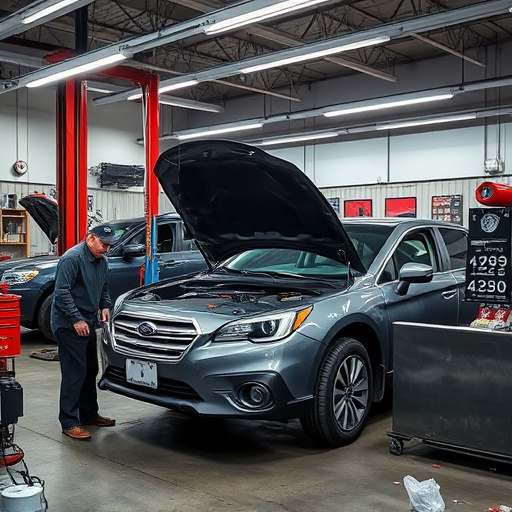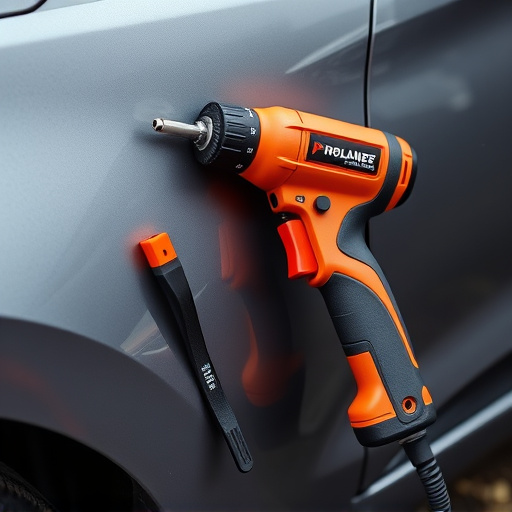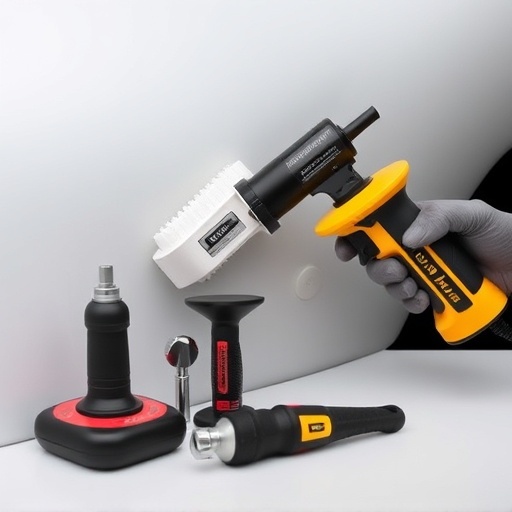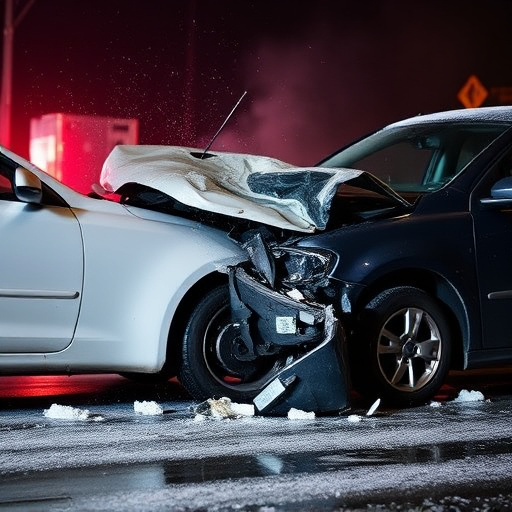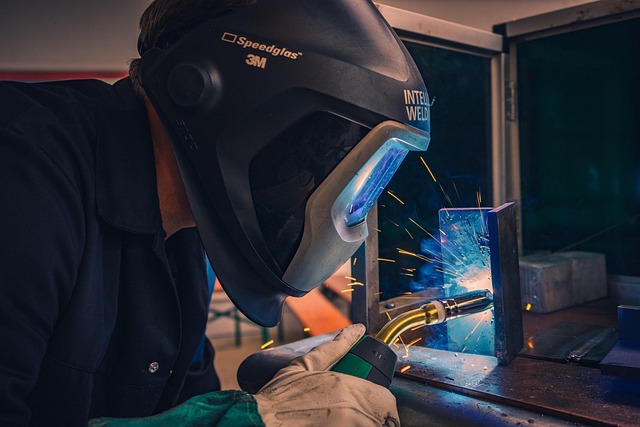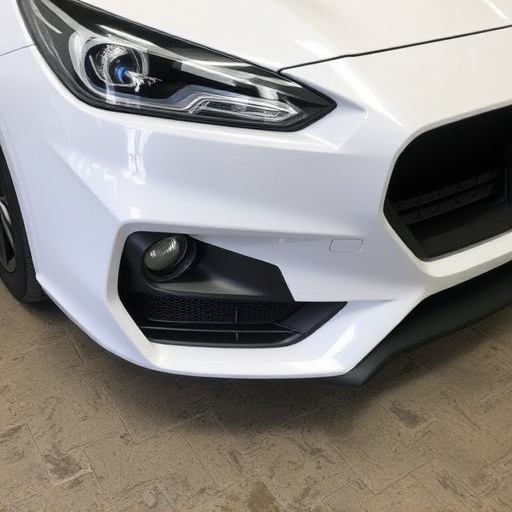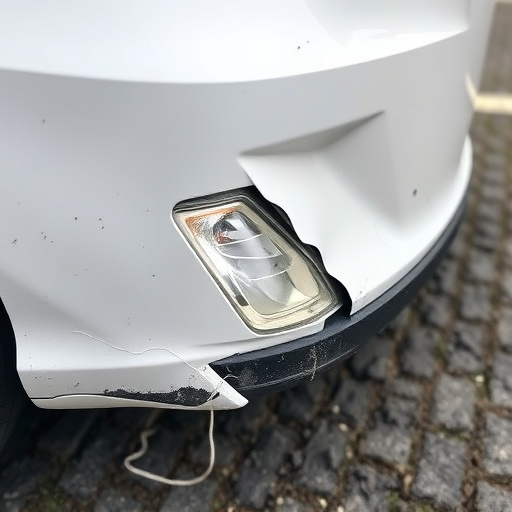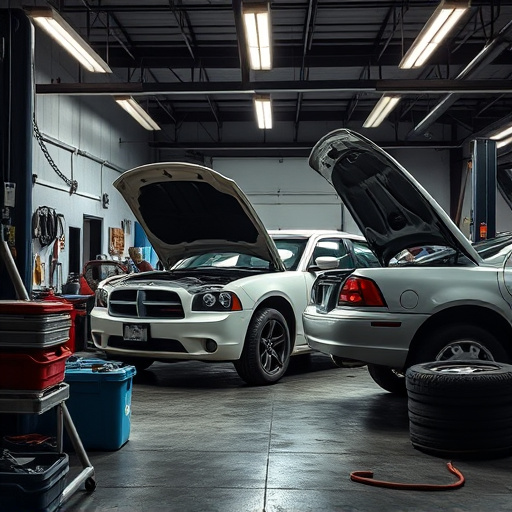Post-accident, check for exhaust system damage to avoid safety risks & costly repairs. Leaks can impact performance, cause emissions issues, and increase fire hazards. Exhaust system collision repair involves assessment, responsible disposal, replacement with OEM parts, reassembly, and quality control testing for safe driving.
After a car accident, recognizing exhaust leaks is crucial for both safety and vehicle longevity. This article delves into the common symptoms of exhaust system damage, especially post-collisions. Understanding these signs is essential in identifying potential issues that could impact your vehicle’s performance and safety. We guide you through the process with practical steps for effective exhaust system collision repair, ensuring peace of mind on the road.
- Recognizing Common Exhaust Leaks After Collisions
- Impact on Vehicle Performance and Safety
- Steps for Effective Exhaust System Collision Repair
Recognizing Common Exhaust Leaks After Collisions
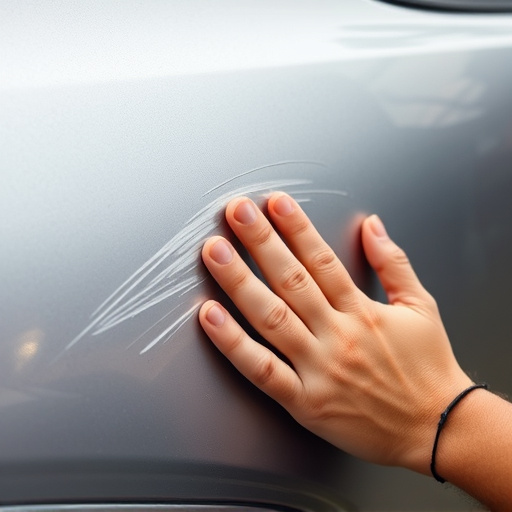
After a car accident, it’s crucial to recognize potential exhaust system damage as part of your collision repair process. Common signs of exhaust leaks include strange noises coming from under the vehicle, such as rumbling or hissing sounds, which could indicate a breach in the exhaust pipe or muffler. Visually inspecting the exhaust system for any visible cracks, holes, or disconnections is another vital step. These leaks not only compromise the performance of your car but also pose safety risks due to potential toxic fumes.
If you suspect an exhaust leak, it’s best to consult a professional auto body repair shop near you for thorough evaluation and timely auto repair. Prompt attention to these issues is essential to prevent further damage and ensure a safe driving experience. Remember, neglecting exhaust system collision repair could lead to more serious and costly auto repairs down the line.
Impact on Vehicle Performance and Safety
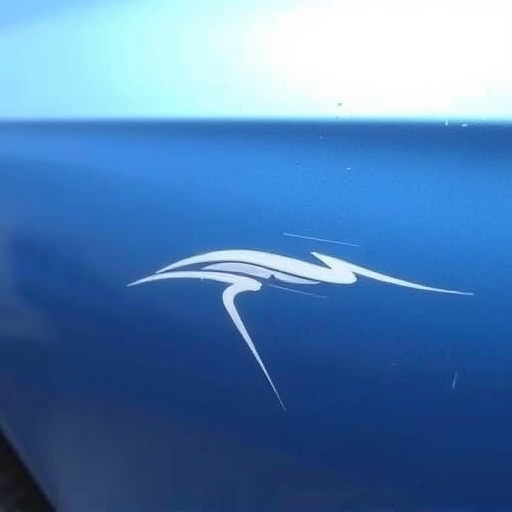
After a car accident, especially if the vehicle experiences significant damage, an exhaust system leak can go unnoticed but has severe implications for both performance and safety. The exhaust system plays a critical role in ensuring optimal engine function and reducing noise pollution. When a collision occurs, even minor ones, it can disrupt the intricate network of pipes, sensors, and components that make up the exhaust system. This disruption can lead to a variety of symptoms, from reduced fuel efficiency and increased noise levels to more serious issues like decreased engine power and poor vehicle handling.
In severe cases, an exhaust leak can compromise the safety features of a vehicle, particularly its emissions control systems. Modern cars are equipped with sophisticated sensors that monitor and regulate exhaust gases for environmental and passenger safety. A breach in the exhaust system could skew these readings, leading to potential failures in emission tests or even more concerning issues like increased risk of fire or explosion due to faulty gas management. For classic car enthusiasts or those owning valuable vehicles like a Mercedes-Benz, proper diagnosis and exhaust system collision repair are paramount to preserving both the vehicle’s performance and its historical or monetary value. Efficient car damage repair ensures that these problems are addressed promptly, restoring not just the physical integrity of the vehicle but also its safety and reliability on the road.
Steps for Effective Exhaust System Collision Repair
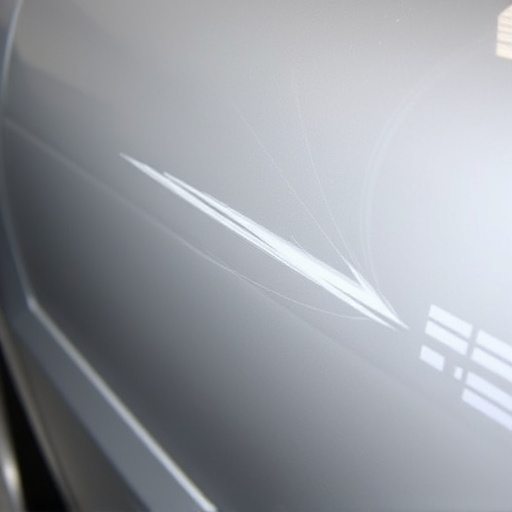
After a car accident, it’s crucial to have your exhaust system thoroughly inspected and undergo effective collision repair. The first step is to assess any visible damage, checking for cracks, holes, or misalignments in the pipes and components. This initial evaluation helps identify potential safety hazards and further damage that could occur if left unattended.
For efficient exhaust system collision repair, a trusted collision center should follow specific steps: begin by removing damaged parts, ensuring proper disposal according to environmental regulations. Next, replace faulty pieces with genuine OEM (Original Equipment Manufacturer) components for optimal performance and longevity. Skilled technicians then reassemble the system, meticulously welding or bolting connections back together. Finally, test the exhaust system’s integrity through a rigorous quality control process before returning the vehicle to its owner, safe and road-ready.
After a car accident, recognizing and addressing exhaust leaks is crucial for both vehicle safety and performance. By understanding common symptoms like unusual sounds, emissions issues, and reduced fuel efficiency, drivers can take proactive steps. Effective exhaust system collision repair not only enhances safety but also ensures your vehicle returns to its optimal state. Following the outlined steps in this article will help you navigate the process, ensuring a reliable and efficient repair for your post-accident vehicle.
